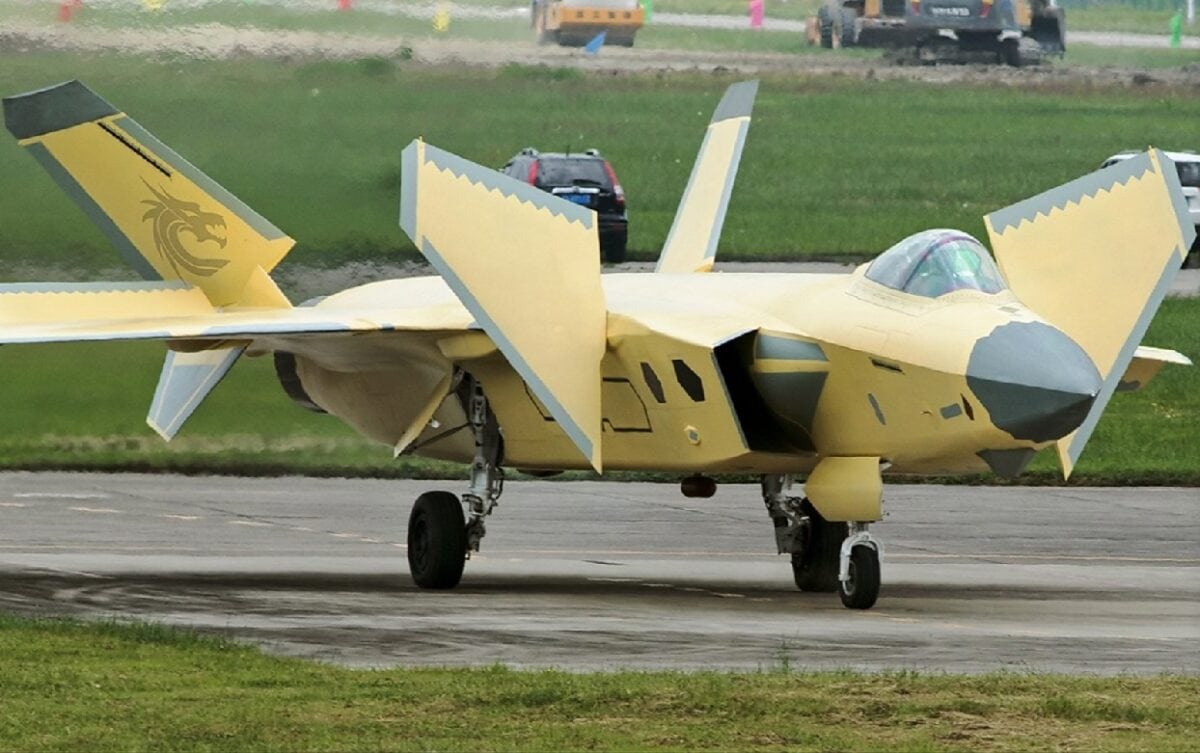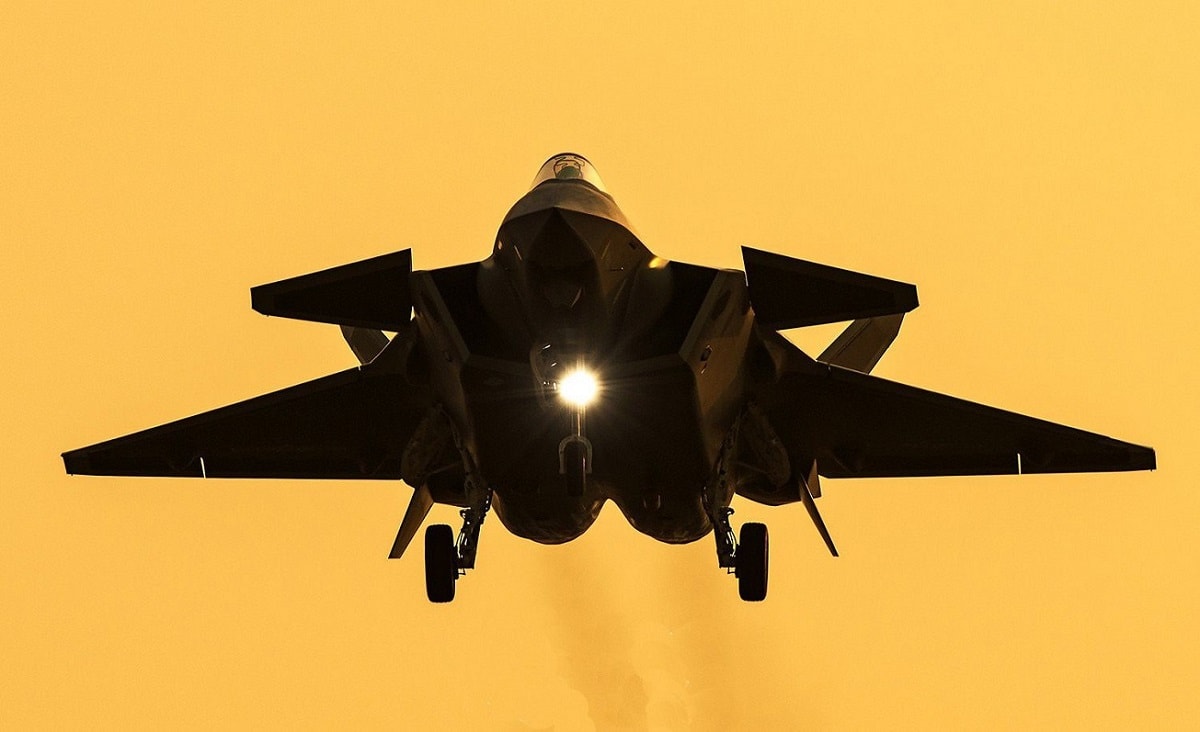The Chengdu J-20 stealth fighter aircraft represents the depth of China’s military aspirations. Beijing seeks to surpass the U.S. in economic and military power, and the Chengdu J-20 is an important part of that effort.
Although widely touted by Chinese military sources and media as an on-par opponent of the U.S. F-22 Raptor, the Chengdu J-20 has been experiencing some issues that could hinder its future.
J-20: Crank Up the Power!
From the get-go, the Chinese fifth-generation fighter jet has been suffering from some serious engine issues.
The initial prototypes of the aircraft used Russian Saturn 117S engines—the same engine that the Russian T-50 PAK FA stealth fighter jet uses. But the Chinese engineers then switched to the WS-15, a domestic version of the Russian engine. However, they failed to achieve the desired results as their engine wasn’t producing enough thrust for the aircraft to fly at its intended speeds. Additionally, the lack of thrust made the Chengdu J-20 less maneuverable during dogfighting, and thus an easier target for American aircraft in the event of a conflict.
So, the Chinese engineers shifted to modifying the existing WS-10C, an engine designed for fourth-generation aircraft. But this engine has still to produce results, despite Chinese claims that it would be as powerful and capable as the F-22 Raptor’s Pratt & Whitney F119 engine.
No J-20 Laser Weapons
As a result of the avionic shortcomings caused by the underperforming engines, the Chengdu J-20 might be limited in what future weapons it will be able to carry.
“There are lingering questions over whether China has managed to achieve the thrust required on the J-20 on current payloads with the locally produced WS-10 engines,” Ridzwan Rahmat, the principal defense analyst at Janes, said.
Recent reports from China suggest that Chinese military analysts are concerned that the country’s fifth-generation air superiority fighter won’t be able to carry directed-energy weapons (DEW), such as lasers, because of the perennial issues with its engines. Less powerful engines mean a smaller payload for the aircraft—If the Chengdu J-20 was a family car going on vacation, the parents wouldn’t be able to bring as much stuff as it would be necessary for the family to truly enjoy its vacation because the car wouldn’t be able to reach the destination.
“As such, loading the aircraft with more payloads, such as power systems for DEW, will have an effect on the aircraft’s range and maneuverability. Additionally, it is unclear how DEW systems will perform in high-speed environments. When an aircraft comes close to the speed of sound, it produces shock waves and aero-optics flow disturbances that degrade the quality of the lasers in use in DEW systems,” Rahmat added.
Radar absorbent technology and missiles are all fine and dandy but it’s the engines that make the aircraft fly. An aircraft that seeks to compete in a fifth-generation battlespace must be as well-rounded as its competition. And despite their shortcomings, the American F-22 Raptor and F-35 Lighting II are superb aircraft that currently outmatch their Chinese counterparts.
Stealing Away
The issue with the Chengdu J-20’s engines is exactly where Beijing comes short.
For decades now, the Chinese Communist Party has unleashed an aggressive espionage campaign against anyone and everyone. The U.S., as the most advanced technological nation in the world, has been the primary target. The National Counterintelligence and Security Center (NCSC) estimates that for the past 20 years, China has been stealing between $200 and $600 billion in economic secrets from the U.S.
Beyond the raw numbers, Beijing has stolen material related to the F-35 Joint Strike Fighter and the F-22 Raptor programs, America’s two stealth fighter jets. Indeed, if one looks at the Chengdu J-20, one will see an awfully close resemblance to the F-22 Raptor. Of course, the Chinese engineers didn’t design their aircraft like the F-22 to pay tribute to the most advanced air superiority fighter jet in the skies today. Rather, a Chinese national purloined data from Lockheed Martin, the manufacturer of the F-22, and passed them on to Beijing. The Chinese spy got 46 months in federal prison, but the damage was done.


Image: Chinese Internet.
Beijing has been doggedly searching for foreign engines to steal and copy. Only recently, the U.S. Department of Justice and FBI finished an investigation and convicted a senior Chinese intelligence officer for trying to get his hands on the classified General Electric Aviation’s composite aircraft engine fan, technology that no other company in the world has been able to reproduce.
What China is lacking at the moment is creativity and originality. The majority of its military is literally based on stolen and copied foreign weapons and systems. China might be exceptional in reverse engineering stuff, but it falls very short indeed when it comes to developing its own original weapons, systems, and platforms. That should be a point of concern for Chinese leaders. If they wish China to become a superpower, they should invest more in original work and less on stealing that of others.
1945’s New Defense and National Security Columnist, Stavros Atlamazoglou is a seasoned defense journalist specializing in special operations, a Hellenic Army veteran (national service with the 575th Marine Battalion and Army HQ), and a Johns Hopkins University graduate. His work has been featured in Business Insider, Sandboxx, and SOFREP.

